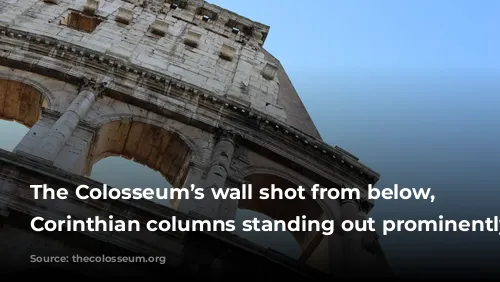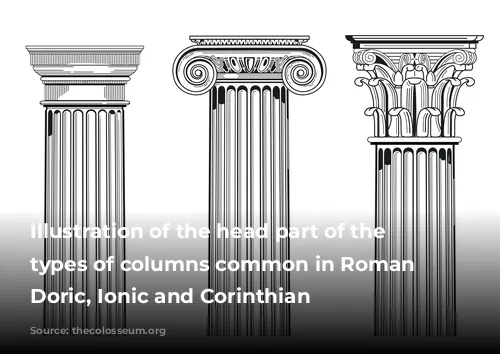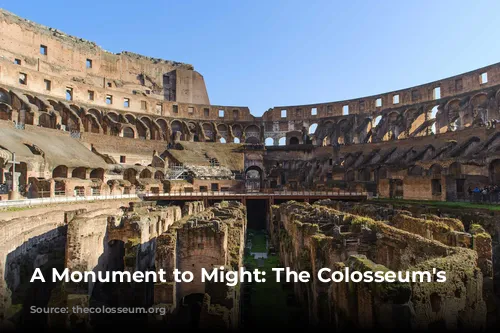The Colosseum, a titan of Roman architecture, stands as a testament to the empire’s grandeur. Despite facing the ravages of time, fires, earthquakes, and human neglect, this iconic amphitheater endures. Its presence is a powerful reminder of the ingenuity and ambition of the Roman people.
A Flavian Project
The Colosseum’s construction, spanning from 70 AD to 80 AD, was overseen by the Flavian emperors – Vespasian, Titus, and Domitian. The building’s original name, Amphitheatrum Flavium, reflects this imperial patronage.
Vespasian’s motivations for this ambitious undertaking went beyond mere architectural ambition. He sought to regain the favor of a populace disillusioned by the excesses of the previous emperor, Nero. The project, therefore, was a strategic maneuver, a symbol of a new era of stability and prosperity.
A Monument of Labor and Stone
The Colosseum’s construction relied heavily on the labor of Jewish slaves, captured during the first Jewish-Roman war. These individuals, forced into servitude, toiled to bring this architectural marvel to life.
The Colosseum’s imposing structure was meticulously crafted from travertine stone, a type of limestone quarried near modern-day Tivoli. An estimated 100,000 cubic meters of this material were used, along with Roman cement, bricks, and tuff blocks. The sheer scale of the project is evident in the colossal dimensions: 189 meters long and 156 meters wide, dwarfing a modern football field.
A Symphony of Architectural Styles
The Colosseum’s design reflects the pinnacle of Roman architectural prowess. The building’s white travertine facade, soaring to nearly 50 meters, would have captivated onlookers with its sheer size and grandeur. The Colosseum embodied a visual feast, showcasing the three primary architectural orders of the time: Tuscan, Ionic, and Corinthian.
The ground floor columns, inspired by the austere Greek Doric style, provided a solid foundation. The second floor featured the slightly more ornate Ionic columns, while the third floor boasted the intricate and decorative Corinthian style. This progressive escalation in complexity from bottom to top created a captivating visual journey for the viewer.
The building’s exterior was further punctuated by 80 arches, each adorned with a half-column. These arches, largest on the ground floor, provided a rhythmic flow to the Colosseum’s facade.
A Stage for Spectacle
The Colosseum’s most defining feature is its arena, a stage for gladiatorial combat, wild animal displays, and other spectacles. The arena, measuring 83 meters long and 48 meters wide, was constructed from wooden panels covered with sand, a reminder of the often-bloody events that unfolded within its confines.
Trapdoors concealed within the arena floor allowed for the dramatic introduction and removal of elements, creating an atmosphere of awe and anticipation. The arena was surrounded by a 10-foot wall, providing a visual barrier between the performers and the spectators.
A Society in Seats
The Colosseum’s cavea, the tiered seating area, provided a vivid reflection of Roman social hierarchy. The podium, the lowest tier, was reserved for the elite: senators, high-ranking officials, and other influential figures. As one ascended the cavea, the seating became less exclusive, ultimately accommodating the less affluent Roman citizens.
The cavea’s organization mirrored the societal structure of ancient Rome, with each tier offering a unique perspective on the spectacle unfolding below.
Beyond the Arena: The Hypogeum
Hidden beneath the arena lay the hypogeum, a network of tunnels and chambers that served as a staging ground for gladiators and animals. This subterranean realm, added after the Colosseum’s initial inauguration, was connected to the arena by 80 vertical shafts.
The hypogeum housed the gladiators, their equipment, and the animals destined for the arena. The network of tunnels, connecting the hypogeum to the gladiators’ barracks and stables, allowed for efficient movement and preparation.
A Legacy of Wonder
The Colosseum stands as a testament to the ingenuity and ambition of the Roman people. Its enduring presence, despite the trials of time, is a reminder of the power and enduring nature of human creativity. This iconic landmark continues to captivate and inspire, serving as a tangible connection to a bygone era of grandeur and spectacle.


